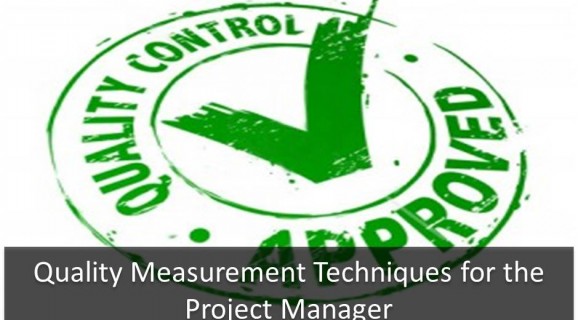
One of the major concerns of the project manager will be that the final project delivery meets expectations of quality. Indeed, project management should ensure that the project is delivered not only on time and within budget, but also with no unresolved defects.
The phrase ‘unresolved defects’ is entirely different to stating ‘zero defects’ – and yet results in the same final outcome: a project that is delivered to the quality promised within the scope document. It also accepts the likelihood that, throughout the lifetime of the project, the project manager is likely to discover quality issues that need to be resolved prior to completion.
This article looks at a few quality measurement techniques and tools the project manager may utilise. As management guru Peter Drucker said:
“What gets measured, gets done.”
- Control Charts
A quality control chart illustrates how a process or task acts over time. The project manager will be looking for stability of behaviour, and a series of seven consecutive readings either above or below the ‘acceptable central line’ would indicate instability of process.
- Flow Charting
Flow charting allows the project manager to follow how a process is progressing, spot existing problems, and predict potential problems.
- Pareto Charts
Pareto charts are used to determine the probability of a variable occurrence, predicting the likelihood of items such as scope creep and client response delays affecting the quality of the project at hand. By using Pareto distributions, the project manager can reduce customer complaints and organisational problems, and improve financial and time management planning.
- Statistical Sampling
By measuring a portion of a task instead of the whole task, an accurate estimate of total quality can be achieved. This saves time and cost.
- Benchmarking
Measuring a task against known performance metrics, perhaps comparing to previous project successes, is known as benchmarking and is standard business practice when inspecting for quality.
Ensure you measure quality consistently
Whichever quality measurement techniques you use as a project manager, they will count for nothing if measurement is not understood. It is imperative that you know what you are measuring, what standards are expected, and how to measure. Only then can you measure effectively and keep quality issues on track. Once these metrics of quality have been identified, other quality measurement techniques available to the project manager include
- Cost benefit analysis
- Experiments and modelling
- Brainstorming
- Cause & effect diagrams

